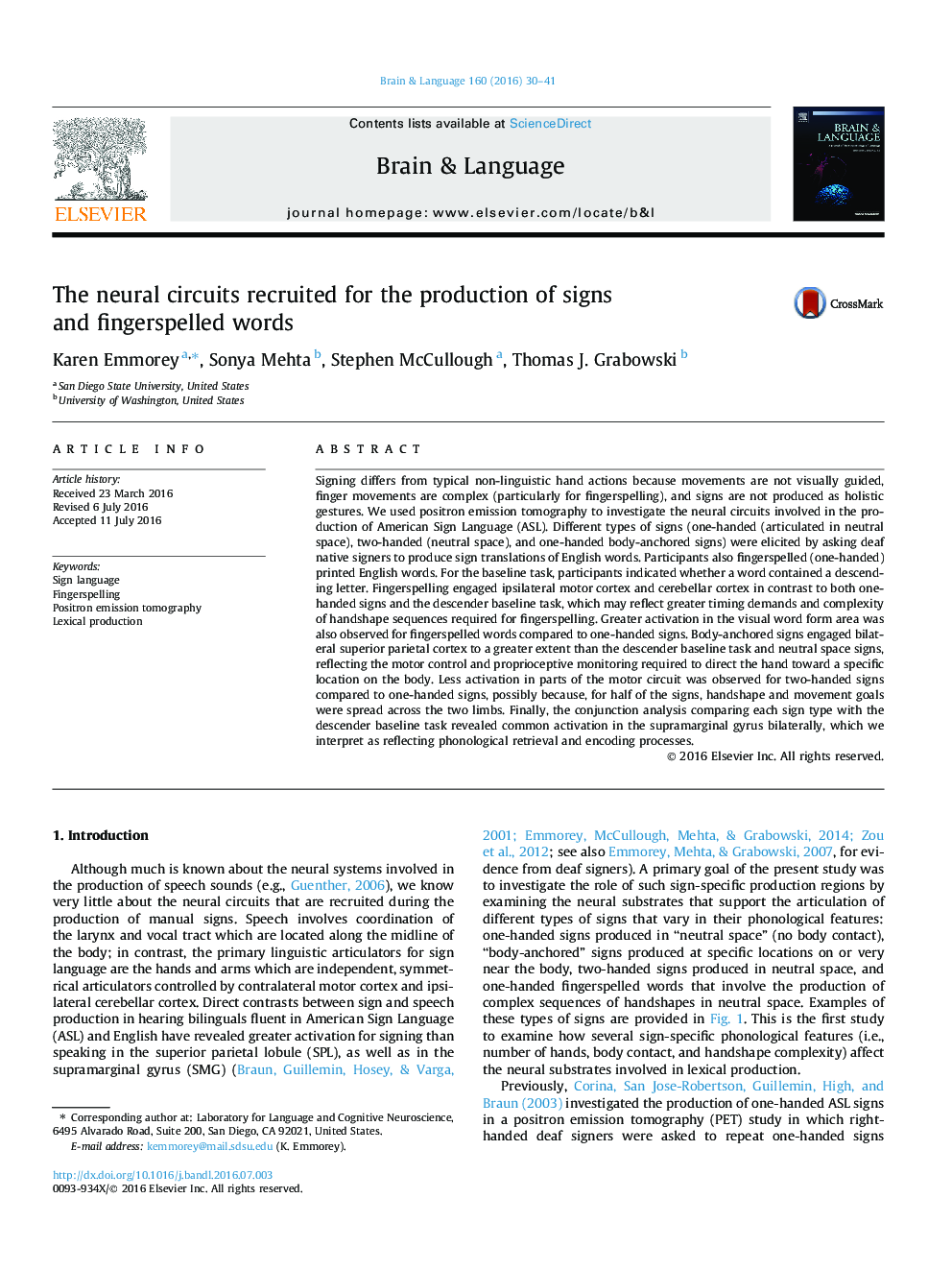| Article ID | Journal | Published Year | Pages | File Type |
|---|---|---|---|---|
| 7283792 | Brain and Language | 2016 | 12 Pages |
Abstract
Signing differs from typical non-linguistic hand actions because movements are not visually guided, finger movements are complex (particularly for fingerspelling), and signs are not produced as holistic gestures. We used positron emission tomography to investigate the neural circuits involved in the production of American Sign Language (ASL). Different types of signs (one-handed (articulated in neutral space), two-handed (neutral space), and one-handed body-anchored signs) were elicited by asking deaf native signers to produce sign translations of English words. Participants also fingerspelled (one-handed) printed English words. For the baseline task, participants indicated whether a word contained a descending letter. Fingerspelling engaged ipsilateral motor cortex and cerebellar cortex in contrast to both one-handed signs and the descender baseline task, which may reflect greater timing demands and complexity of handshape sequences required for fingerspelling. Greater activation in the visual word form area was also observed for fingerspelled words compared to one-handed signs. Body-anchored signs engaged bilateral superior parietal cortex to a greater extent than the descender baseline task and neutral space signs, reflecting the motor control and proprioceptive monitoring required to direct the hand toward a specific location on the body. Less activation in parts of the motor circuit was observed for two-handed signs compared to one-handed signs, possibly because, for half of the signs, handshape and movement goals were spread across the two limbs. Finally, the conjunction analysis comparing each sign type with the descender baseline task revealed common activation in the supramarginal gyrus bilaterally, which we interpret as reflecting phonological retrieval and encoding processes.
Related Topics
Life Sciences
Neuroscience
Biological Psychiatry
Authors
Karen Emmorey, Sonya Mehta, Stephen McCullough, Thomas J. Grabowski,
